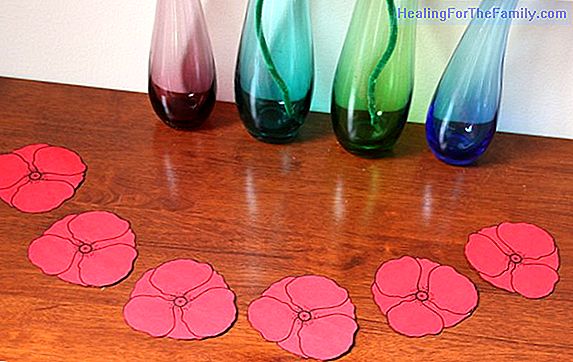Contraceptives during breastfeeding
Most women prefer to wait a few months, or years, before getting pregnant again. So it's super important to know this: You can get pregnant after childbirth even if you have not yet had the first rule. Why? Because the first rule occurs about two weeks after the first ovulation, and since we do not
Most women prefer to wait a few months, or years, before getting pregnant again. So it's super important to know this: You can get pregnant after childbirth even if you have not yet had the first rule. Why? Because the first rule occurs about two weeks after the first ovulation, and since we do not know when that first ovulation is going to take place, we can not be sure that we are just ovulating when we have sex.
So, this means, that we have to use contraceptive methods from the first moment we decide to have sex with penetration again. Even during breastfeeding.
Contraceptive methods during breastfeeding

I tell you what contraceptive measures you can use in the postpartum period:
1- MELA (lactation and amenorrhea method): LAM is a totally natural contraceptive method that the body has. If you are breastfeeding exclusively to your baby (only take milk from your chest and directly from your chest, no bottles) your body protects you from not getting pregnant again. This method has a demonstrated effectiveness of 98-99% as long as the following premises are met:
- Your baby is less than 6 months old and only drinks milk from your breast. Toma - Breastfeed every 6 hours or less during the night and every 4 hours or less during the day.
- You have not had menstruation yet after delivery (amenorrhea).
Fulfilling those three points above is as protected from a pregnancy as if you were using another non-natural method of contraception.
2-
Preservative : we all know this barrier method, let's not forget that it is one of the safest and with fewer side effects. Besides being the only one that protects us against sexually transmitted diseases.3-
Hormonal contraceptives : what we all know as "the pill", although it also exists in the form of injections in addition to pills. The normal "pills," taken by women who do not breastfeed, are composed primarily of two hormones: estrogen + progesterone. Well, during breastfeeding it is recommended to use some contraceptives that do not carry estrogen, or that carry them in very low quantity. The reason is that estrogen can reduce milk production, so it is best to use progesterone-only contraception (it is commonly known as "mini-pill"). Your doctor can prescribe them, and you can choose to take them in the form of pills, quarterly injection or subcutaneous implant. It is completely safe for the baby and for breastfeeding. As any medication has side effects for you, which your doctor should inform you and you must weigh to decide whether to use it or not. The contraceptive efficacy of the progesterone pill is equal to that of the combined pill (98%).4-
IUD (intrauterine device): it is a plastic device that the gynecologist or midwife places in your uterus and secretes small doses of progesterone. You must wait between 6-8 weeks postpartum to be able to use it. There are also non-hormonal IUDs, which work simply by creating a hostile environment in the uterus (reaction to a foreign body) that prevents the sperm from fertilizing the ovule or prevents implantation. Both have an efficiency of 98-99%. 5-
Diaphragm : a silicone cup that is placed in the vagina and covers the cervix during intercourse, preventing access to sperm. It is recommended to always use with a spermicide to increase its effectiveness. It is a barrier method like the condom, with the advantage that you put it on you at the time you decide before or during sex.6-
Definitive methods : vasectomy or tubal ligation.My advice is to decide according to whether you want to have more children soon, your health status and above all with which you feel more comfortable and safe. The most effective method is one with which you feel confident enough to always use it with determination.












